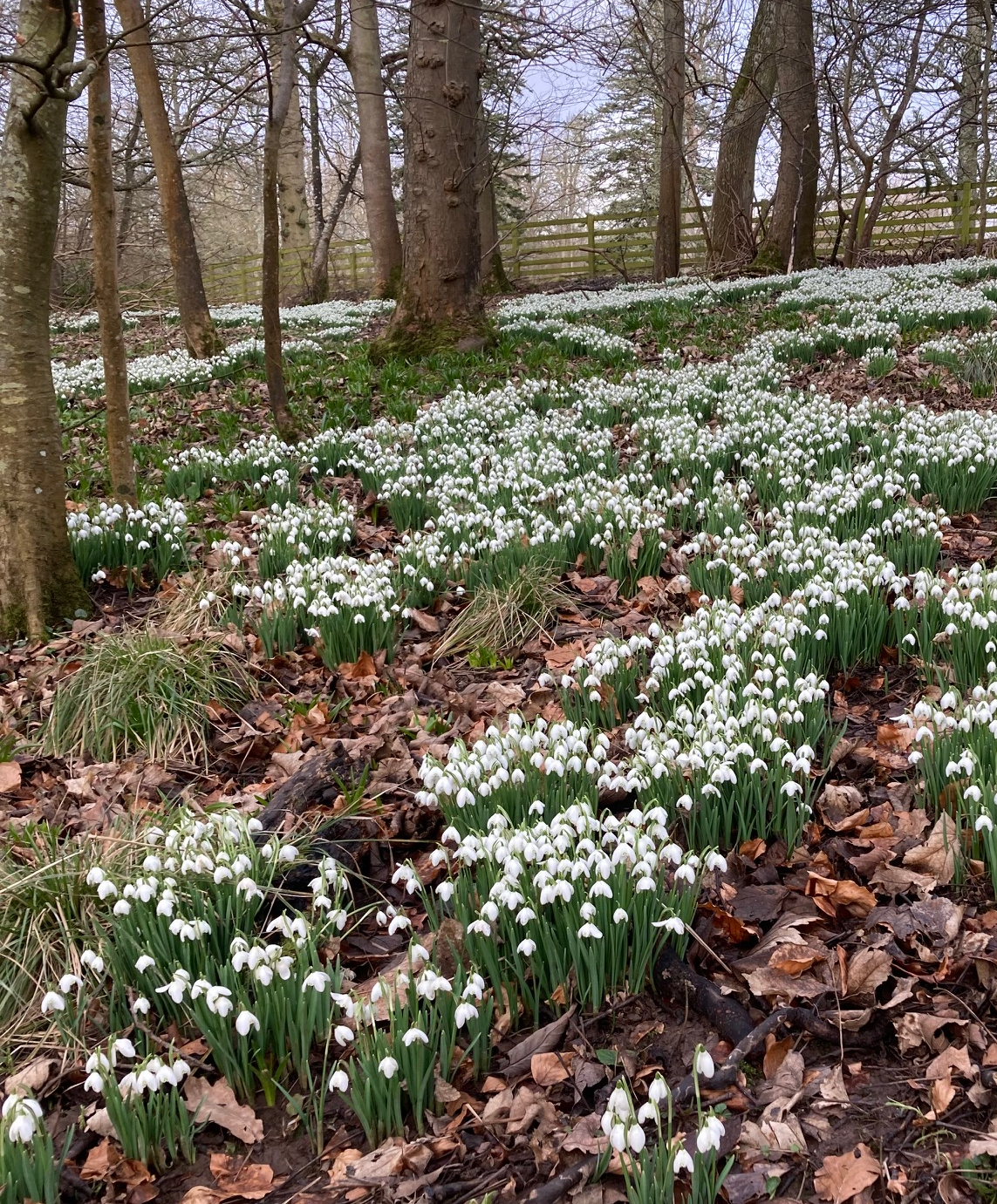Winter newsletter 2021
Newsletters ·
Credit: Dr Susan Tweedie “Snowdrops at the HGNC outpost in Minto Glen”
Beta version of new genenames.org search released
Earlier this month, we released a beta version of an improved search for genenames.org. The main improvements compared to our current search are as follows:
- One search works for all - there is no longer a need to select between searching, for example, for genes or gene groups
- No more need to enter wildcards (*)
- A new auto-suggest feature that works for several of our search categories, including approved symbols, previous symbols, aliases, gene names and group names
- The ability to search with all major variant spellings between UK and American English, such as ‘signalling’ and ‘signaling’
- The ability to download search results in TXT or JSON format
For more information, you can read our recent blog post, which outlines these improvements in full. Please test this new search on our beta genenames website and send us your feedback, either via our email address hgnc@genenames.org or our feedback form.
Coming soon - a new curator post
The HGNC will soon be advertising for a new curator post. Please look out for details of this in the forthcoming weeks and notify anyone you know that you think would be interested!
Updates to placeholder symbols
HGNC curators continue to update placeholder symbols wherever possible. The following examples are all genes with placeholder symbols that have been updated with more informative symbols based on published information:
- C9orf16 -> BBLN, bublin coiled coil protein
- C16orf71 -> DNAAF8, dynein axonemal assembly factor 8
- C20orf194 -> DNAAF9, dynein axonemal assembly factor 9
- C12orf66 -> KICS2, KICSTOR subunit 2
- C16orf70 -> PHAF1, phagosome assembly factor 1
- CXorf56 -> STEEP1, STING1 ER exit protein 1
-
C11orf95 -> ZFTA, zinc finger translocation associated
- FAM160A1 -> FHIP1A, FHF complex subunit HOOK interacting protein 1A
- FAM160A2 -> FHIP1B, FHF complex subunit HOOK interacting protein 1B
- FAM160B1 -> FHIP2A, FHF complex subunit HOOK interacting protein 2A
- FAM160B2 -> FHIP2B, FHF complex subunit HOOK interacting protein 2B
The following examples were updated based on a change in locus type from ‘gene with protein product’ to ‘RNA, long non-coding’:
- C6orf99 -> LINC02901, long intergenic non-protein coding RNA 2901
- C5orf66 -> PITX1-AS1, PITX1 antisense RNA 1
- C17orf102 -> TMEM132E-DT, TMEM132E divergent transcript
- C22orf34 -> MIR3667HG, MIR3667 host gene
New gene groups
We have released the following new gene groups in the past few months:
- CREC family
- Mitochondrial translation release factor family (MTRF)
- Axonemal radial spoke subunits (RSPH)
Gene Symbols in the News
A variety of recent news reports have linked human genes to COVID-19 using approved gene symbols: Work on patients in intensive care with a severe form of the disease found that the following specific variants of five immune system-related genes were common in these patients: IFNAR2, TYK2, OAS1, DPP9, and CCR2. Another study found that either a particular HLA-E allele, or the absence of the KLRC2 gene, was associated with patients who were hospitalised with COVID-19, while a variant of the DPP4 gene that is believed to be inherited from Neanderthals is also associated with patients in hospital with severe disease. A different study found that memory T cells in the lungs of patients with severe COVID-19 express lower levels of the CXCR6 gene product, compared to patients with moderate disease. Finally, a study looking for reasons as to why older patients are more at risk for more severe disease found an association between overexpression of five genes, FASLG, CTSW, CTSE, VCAM1, and BAG3 in patients aged 50-79 compared to younger patients.
In non-COVID-related news, variants in the following three genes have been associated with skin colour and vitamin D deficiency in African American people: SLC24A5, SLC45A2 and OCA2, while the TBX15 gene has been associated with face shape, and a particular variant of this gene in Asia appears to inherited from Denisovans. A recent study has linked the HAND2 gene to gestational length in humans, with levels of the expression of this gene decreasing as labour draws near. There is hope that this finding might be relevant for further studies on preterm birth.
Publications
The RNAcentral Consortium (inc. Bruford, E and Seal, R). RNAcentral 2021: secondary structure integration, improved sequence search and new member databases. Nucleic Acids Res. DOI:10.1093/nar/gkaa921 [PMID:33106848 PMC7779037
Opinion: Standardizing gene product nomenclature-a call to action. Fujiyoshi K, Bruford EA, Mroz P, Sims CL, O’Leary TJ, Lo AWI, Chen N, Patel NR, Patel KP, Seliger B, Song M, Monzon FA, Carter AB, Gulley ML, Mockus SM, Phung TL, Feilotter H, Williams HE, Ogino S. Proc Natl Acad Sci U S A. 2021 Jan 19;118(3):e2025207118. doi: 10.1073/pnas.2025207118. PMID: 33408252 PMC7826363.
Standardized nomenclature and open science in Human Genomics. Vasiliou V, Veselkov K, Bruford E, Reichardt JKV. Hum Genomics. 2021 Feb 22;15(1):13. doi: 10.1186/s40246-021-00312-9. PMID: 33612096 PMC7898730.
